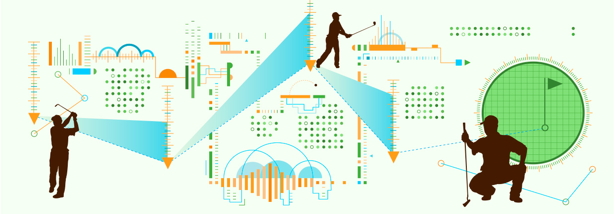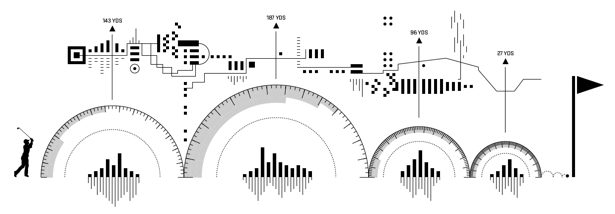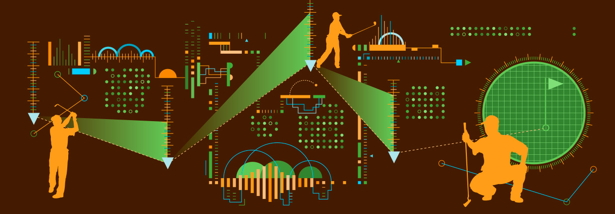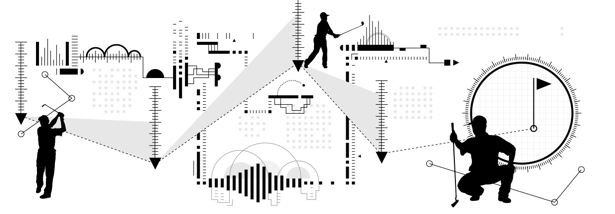Image of the day: ShotLink by Eric Frommelt
Eric Frommelt tells us more about today's image of the day, a recent editorial illustration project ...
Computer Arts: Tell us about ShotLink ...
Eric Frommelhe: The brief was pretty open. The story I was asked to illustrate was about measuring and analysing individual golfers' ShotLink data during the PGA Tour. ShotLink is a technology used by the PGA Tour that measures the latitude, longitude and elevation of a course and digitally maps it, while, during play, a group of volunteers walk with players, recording what they do. Another group of people use lasers to track where balls land within one centimeter. All this data gets crunched, analysed and beamed to to a trailer on the ground, where it's used by broadcasters and writers. I was interested in showing that there's this invisible layer of data collection and metrics going on during play.

CA: How did you put the piece together?
EF: My process starts with a lot of research. For this project, I didn't have access to the completed article, but I knew it was about ShotLink, so I researched that. I let all the information I've collected sink in. Then, I'll move on to sketches, which are usually pretty comprehensive, depending on time. I work in Illustrator and usually present two or three sketches in black and white. After the sketch is approved, I move on to completing and preparing the final artwork. For the most part, my sketches are pretty close to the final artwork, so I'm mostly focusing on colour at this stage. I spent about one-two days on each stage of this project.

CA: How did you get into design?
EF: When I was young, I was always into video games, computers, comic books, fashion and architecture. Although, I never really considered myself a very good artist. I didn't really know what design was until college, where I came across an issue of RayGun magazine (No. 6). It was a transformative moment; I'd never seen anything like it. That made me curious about how it was made and who made it. I started studying design soon after that. My style is abstract, geometric and heavily influenced by technology and data visualisation. I'm interested in showing how we use technology in novel ways. Our modern society is building this enormous technological infrastructure that's completely invisible. I'm interested in exposing it, and illustrating its stories.

Check out more of Eric's work on his website, on Facebook and, while you're at it, why not give him a follow on Twitter, too.

Subscribe to Computer Arts for your monthly fix of the world's best inspirational design work. Available on iPad, in print or on other digital devices.
Daily design news, reviews, how-tos and more, as picked by the editors.

The Creative Bloq team is made up of a group of art and design enthusiasts, and has changed and evolved since Creative Bloq began back in 2012. The current website team consists of eight full-time members of staff: Editor Georgia Coggan, Deputy Editor Rosie Hilder, Ecommerce Editor Beren Neale, Senior News Editor Daniel Piper, Editor, Digital Art and 3D Ian Dean, Tech Reviews Editor Erlingur Einarsson, Ecommerce Writer Beth Nicholls and Staff Writer Natalie Fear, as well as a roster of freelancers from around the world. The ImagineFX magazine team also pitch in, ensuring that content from leading digital art publication ImagineFX is represented on Creative Bloq.
